Out & About: Montshire’s new climate exhibit digs into the permafrost
| Published: 06-03-2023 9:30 PM |
NORWICH — On the second floor of the Montshire Museum of Science last week, a group of schoolchildren was hard at work building with wooden toys.
They constructed railroads, roads and some cabins. Then, the table beneath the structures began to shift and parts of it fell away, leaving their buildings in ruins.
“Guys, let’s make houses that can survive,” one child said, and the group quickly got back to work.
The building activity is part of the Montshire’s latest exhibit, “Under the Arctic: Digging into Permafrost,” which focuses on the effects of climate change, the scientists at Hanover’s Cold Regions Research and Engineering Laboratory (CRREL) who are studying it and what people can do to help. It will be on display through Sept. 4. More information and admission rates can be found at montshire.org.
While the Montshire has had weather-related exhibits in the past, this is the first one that makes climate change the focal point, museum staff said during a tour last week. They hope the exhibit provides an entry point for parents to start discussing it with their children.
“It’s not really scary,” Matthew DiClemente, exhibits fabricator, said about the exhibit. “There’s no starving polar bears on ice flows.”
There’s a “Methane Bubble Station” where people can learn about how, as the permafrost melts, more methane and carbon dioxide get released into the atmosphere. Kids can examine — and even try on — some of the gear the scientists wear while out in subzero temperatures. There’s fossils from life that existed during the Ice Age. Visitors can learn about how people are adapting to climate change and what scientists are doing to help communities adjust.
There’s “an element of empowerment to it,” said Lara Litchfield-Kimber, the Montshire’s executive director. One of the goals is for kids to begin “seeing themselves as part of the solution” — and perhaps even be inspired to become climate scientists themselves.
Article continues after...
Yesterday's Most Read Articles
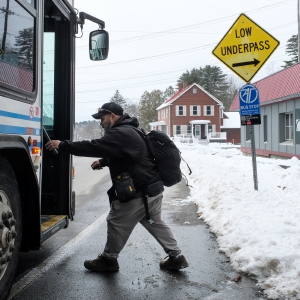 Upper Valley winter shelters kept dozens warm and dry
Upper Valley winter shelters kept dozens warm and dry
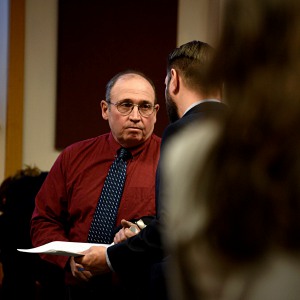 Former principal of South Royalton School released from prison
Former principal of South Royalton School released from prison
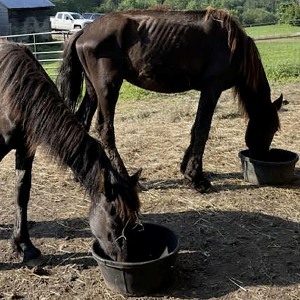 Owner of Friesian horse facility ordered to pay care costs for seized animals
Owner of Friesian horse facility ordered to pay care costs for seized animals
The centerpiece of the exhibit is a replica of part of a permafrost research tunnel, which is operated by CRREL in Fox, Alaska.
Visitors can look at the different layers of earth — and even get a whiff of what it smells like.
While the exhibit includes research conducted by Hanover-based CRREL scientists who frequently do work in the arctic, it did not originate in the Upper Valley.
It was created by the Geophysical Institute at the University of Alaska Fairbanks using a National Science Foundation grant and is on loan from the Oregon Museum of Science and Industry. When CRREL staff heard their work was going to be on display at the Montshire, they were surprised — and thrilled.
“We’re just as excited to get over there, see it and be able to say, ‘I’ve been in the tunnel. I’ve seen it,’ ” said John W. Weatherly, chief of CRREL’s Terrestrial and Cryospheric Science Branch. He supervises scientists in Hanover and Alaska who work in the arctic.
While CRREL researchers regularly publish their findings, their work is not always easy for people without a science background to understand, Weatherly said during a phone interview last week. Even though public education is not part of CRREL’s mission, the researchers feel a responsibility to help improve the community’s scientific literacy and communicate “what we do so people understand what it is what we do,” Weatherly said.
The Montshire’s exhibit helps to showcase that work in a more accessible way, and there are plans in the works to bring in climate scientists and other researchers, including those who work at CRREL, to talk about their work.
“The permafrost is so at risk of warming and melting,” Weatherly said, noting that permafrost is under more than half of Alaska’s land mass and that the state is warming faster than other parts of the United States. “Those are very important issues for the Army Corps of Engineers and the Defense Department and all the pubic infrastructure that’s in Alaska. We consider it to be a fragile resource we’re trying to maintain, study and understand.”
Litchfield-Kimber emphasized that instead of the exhibit being a teaching opportunity for children alone, parents who may lack familiarity with climate science can approach it as an opportunity for themselves to learn alongside their children. They can also rely on hands-on activities, a staple of all Montshire exhibits, to better understand the impact climate change has had on communities, such as by using the wooden toys and table to see how construction has changed.
“It takes something that’s familiar and makes it a novel concept,” Litchfield-Kimber said.
Bringing the exhibit to the Montshire has been in the works for around five years, and it fits in well with the museum’s expanding mission to address recent scientific advancements and to bring in exhibits that can appeal to a wider range of age groups, particularly older children. Part of that shift stems from soul searching children’s science museums did during the COVID-19 pandemic. There was a realization that many people do not have strong science literacy skills and a desire to examine how national policies can impact science, Litchfield-Kimber said.
“We’re going to be leaning into the current science a bit more,” she said. “What would an activated community look like … and how can the Montshire be part of that?”
Referencing part of the permafrost exhibit that includes personal stories from people whose homes have been impacted by climate change, Litchfield-Kimber said, “We want people to see themselves in our programs, our exhibits and being able to do something.”
Liz Sauchelli can be reached at esauchelli@vnews.com or 603-727-3221.




 Over Easy: ‘A breakfast without a newspaper is a horse without a saddle’
Over Easy: ‘A breakfast without a newspaper is a horse without a saddle’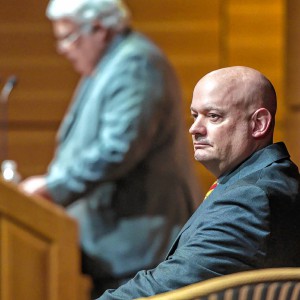 Lawsuit accuses Norwich University, former president of creating hostile environment, sex-based discrimination
Lawsuit accuses Norwich University, former president of creating hostile environment, sex-based discrimination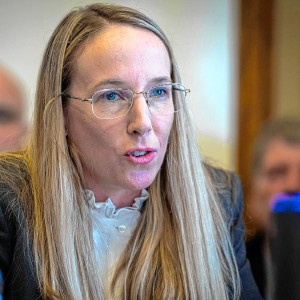 In divided decision, Senate committee votes to recommend Zoie Saunders as education secretary
In divided decision, Senate committee votes to recommend Zoie Saunders as education secretary
